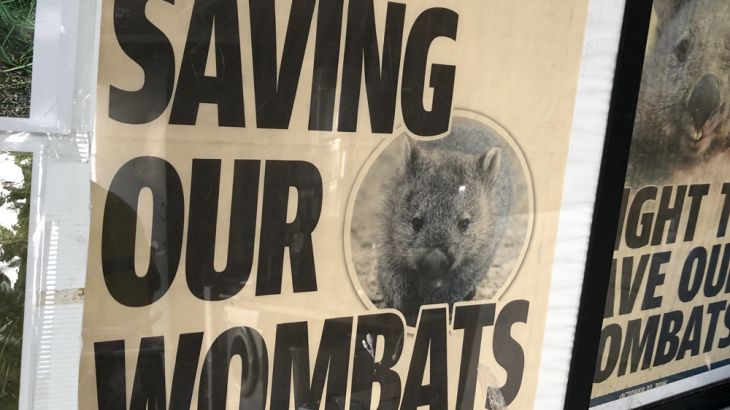Saving Australia’s Wombats
The native animal is suffering from a painful and deadly disease.

In the southern Australian state of Tasmania, Bea Mayne is on the hunt for wombats.
She wants to find their burrows so that she can help those suffering from an agonising disease – sarcoptic mange, a contagious affliction that can result in a painful death for wombats.
Keep reading
list of 4 itemsHong Kong’s first monkey virus case – what do we know about the B virus?
Indonesia hunts for ‘extinct’ Javan tiger
In Colombia, hunting poachers, not drug traffickers
“We’ve seen them disappear in their hundreds, just in this area,” Bea says. “If we see one that’s died, and we often do that, it’s just heartbreaking.”
In nearby Narawntapu National Park, wombat numbers plunged by 94 percent from 2010 to 2016, according to government figures. The state used to promote the national park as a prime place for tourists to see one of Australia’s most loved native animals, but now wombat pictures have been removed from tourism brochures.
Mayne works with a group of volunteers trying to treat wombats suffering from mange across the island.
The volunteers install a plastic flap across the entrance to wombat burrows, which tips a dose of Cydectine, a chemical used to treat sheep lice, on the animal’s back. The government says that overall wombat numbers are not declining in Tasmania, and that Narawntapu National Park is an isolated case.
But wildlife campaigners and government representatives agree a more effective treatment is needed.
“For any wombat affected by mange, it’s an animal welfare issue,” says Rosemary Gales, a biodiversity expert who works with the government department responsible for mange control.
“It’s a terrible thing to see an animal so severely afflicted by mange and so that’s a real priority – to try and find an effective treatment. We need a drug that doesn’t have to be applied as often, for as long.”
‘The most animal suffering of any disease’
At the University of Tasmania, wildlife ecology expert Dr Scott Carver is trying a new treatment with a drug called Fluralaner.
He says mange causes “perhaps the most animal suffering of any disease I’ve worked with”.
Caused by microscopic mites that bury down into the animal’s skin, mange makes wombats itch uncontrollably. Wombats scratch until their skin cracks, bleeds and crusts. Their eyes and ears often close over.
![A wombat burrow where microscopic mites thrive, the cause of the mange creating a challenge for Australia's wombats [Margaret Gordon/Al Jazeera]](/wp-content/uploads/2019/05/23df9e9548df48bfa1018fb154494c1a_18.jpeg)
The mites that cause mange thrive in the cool and humid environment of a wombat’s burrow.
Concerns about wombats are not confined to Tasmania.
Donna Stephan runs one of the country’s largest wombat sanctuaries near the Australian capital, Canberra, called Sleepy Burrows. She has been rescuing injured and orphaned wombats for the past 15 years. Stephan says she has seen a dramatic increase in mange cases over that time.
“Ten years ago I could have given you mange-free areas that we looked to release (wombats) in. I could not do that now for you,” she says.
At Sleepy Burrows, Stephan and Marcus Foth, a design professor at the Queensland University of Technology, are trialling an alternative treatment method for mange.
They have created “burrow hospitals” which sit on top of real wombat burrows. As the wombat comes up to feed, a carer can administer an oral treatment for mange once a week.
![Hundreds of young wombats are injured or orphaned every year due to traffic incidents [Margaret Gordon/Al Jazeera]](/wp-content/uploads/2019/05/3cc09ae2e85c400197820c3a76efd1c2_18.jpeg)
In the long-term, Donna says, the real problem is the stress placed on wombats from humans, such as habitat destruction and those hit by cars. This stress leads to a suppressed immune system, which makes them more susceptible to mange infections.
Stephan’s sanctuary receives more than 300 injured and orphaned wombats a year. Many are babies whose mothers were killed on roads.
The youngest wombats live in Stephan’s house with her family.
“The idea was not to have them in the house. It was to keep it separate, but the sanctuary’s just grown to a point now that it’s not possible,” she says.
Stephan is pessimistic about the future of the species.
“They’ll be on the critically endangered list within 20 years – no doubt in my mind,” she says.